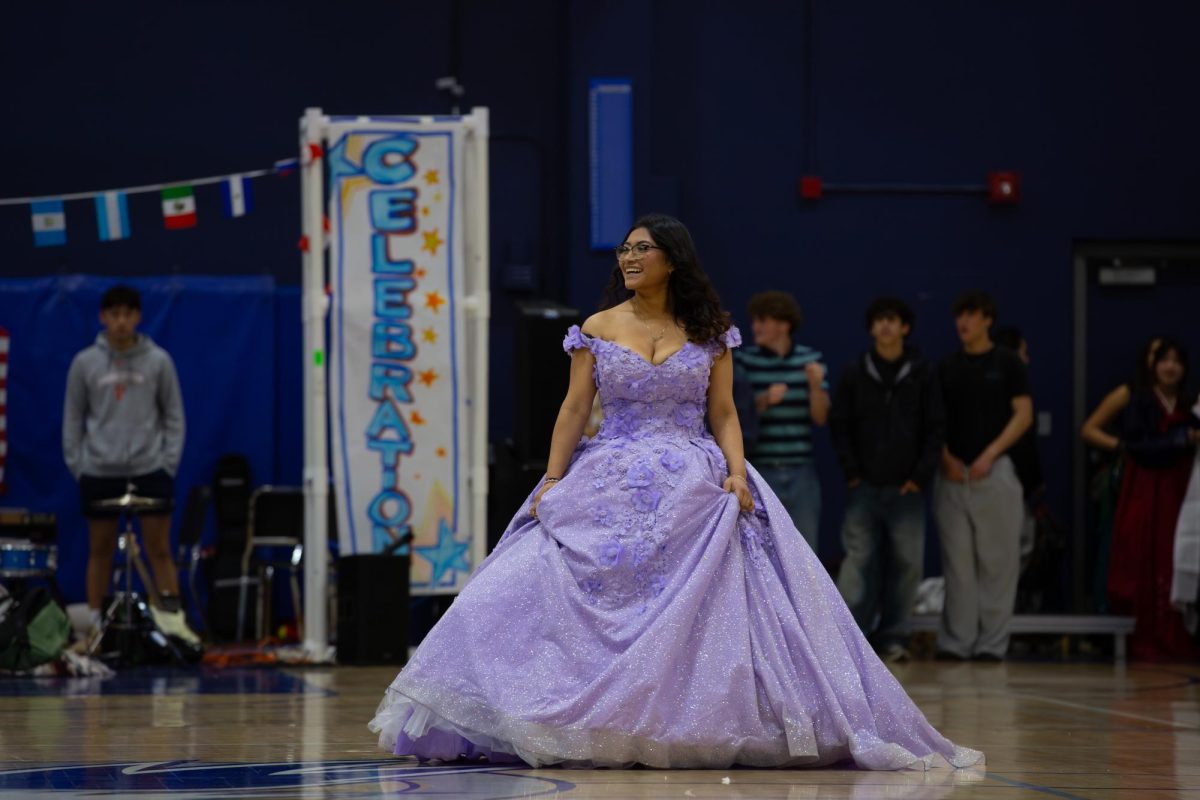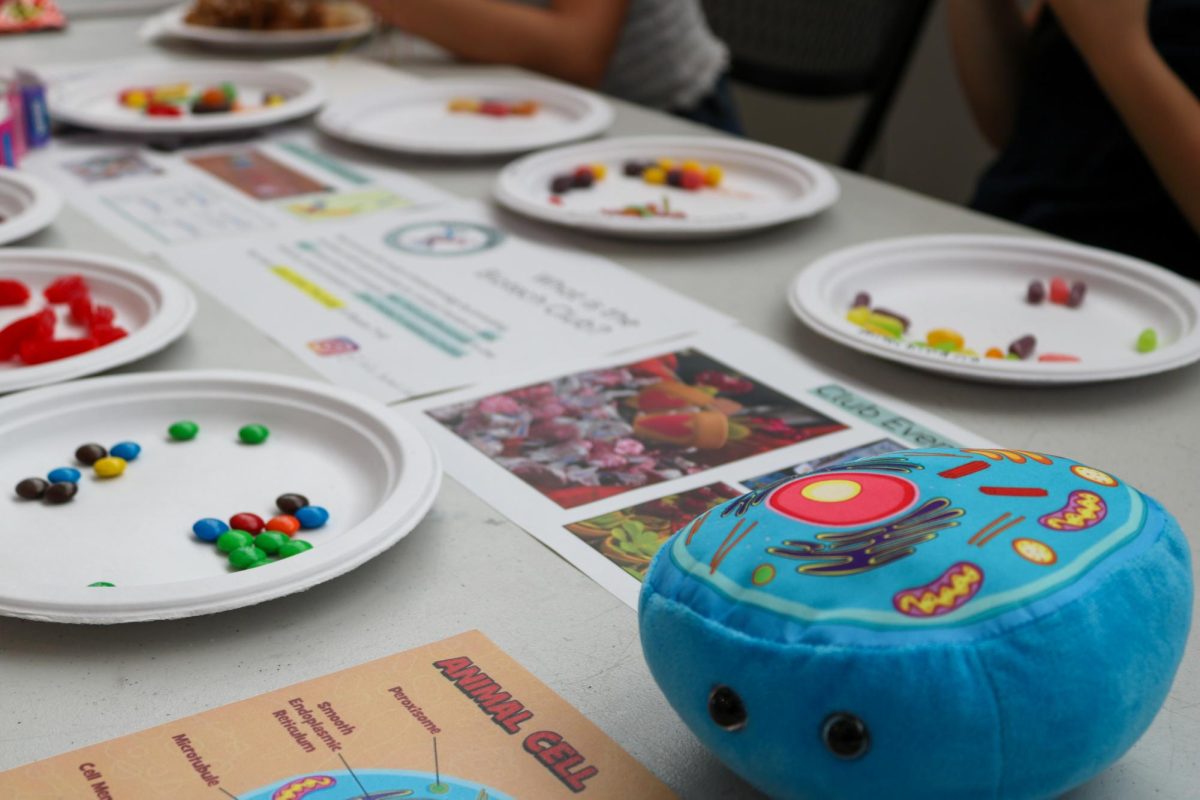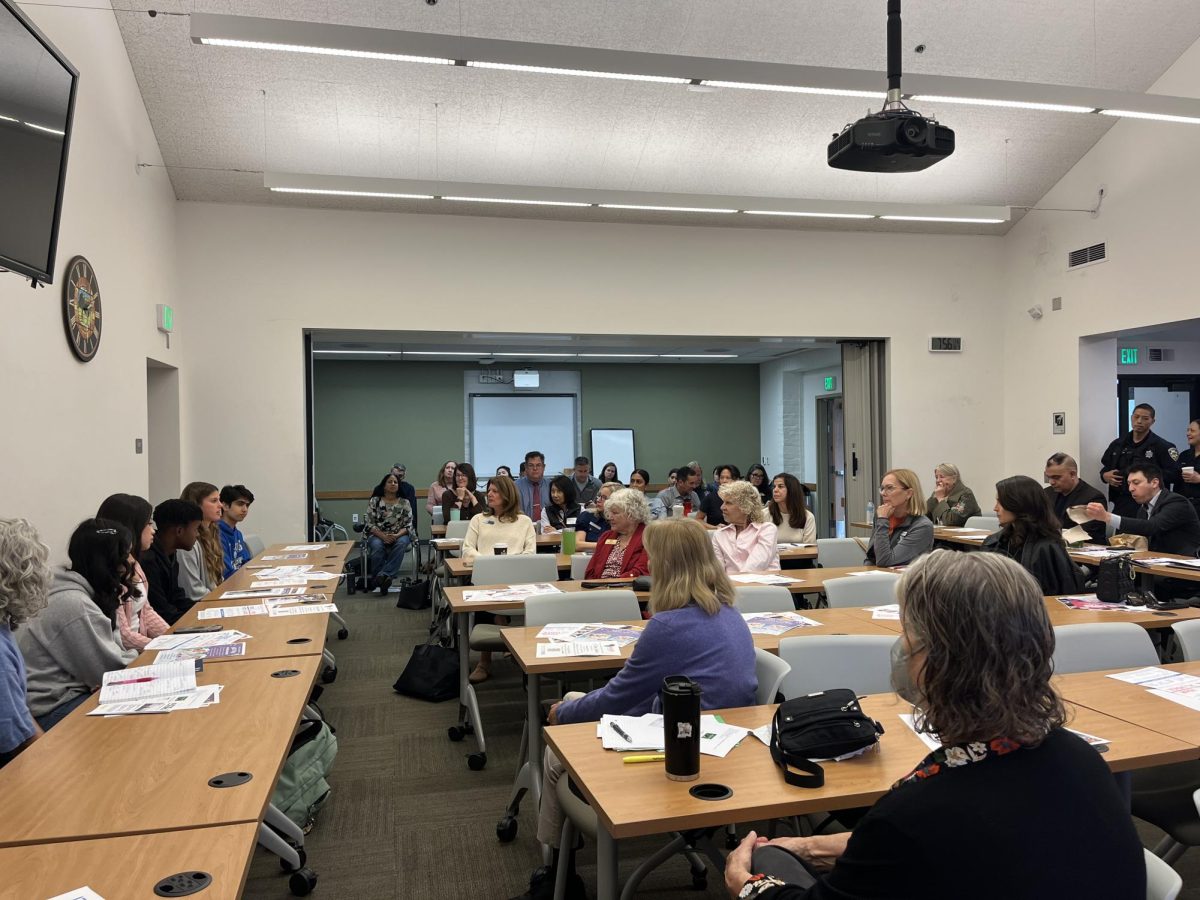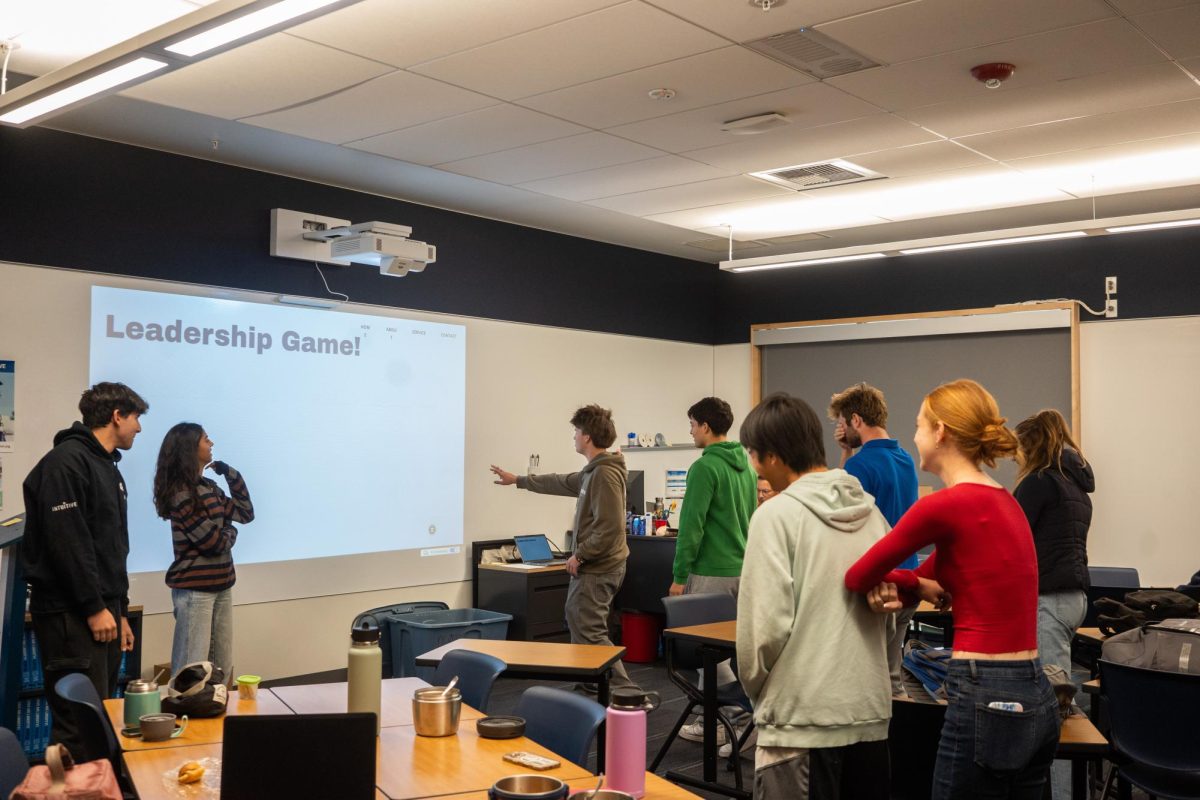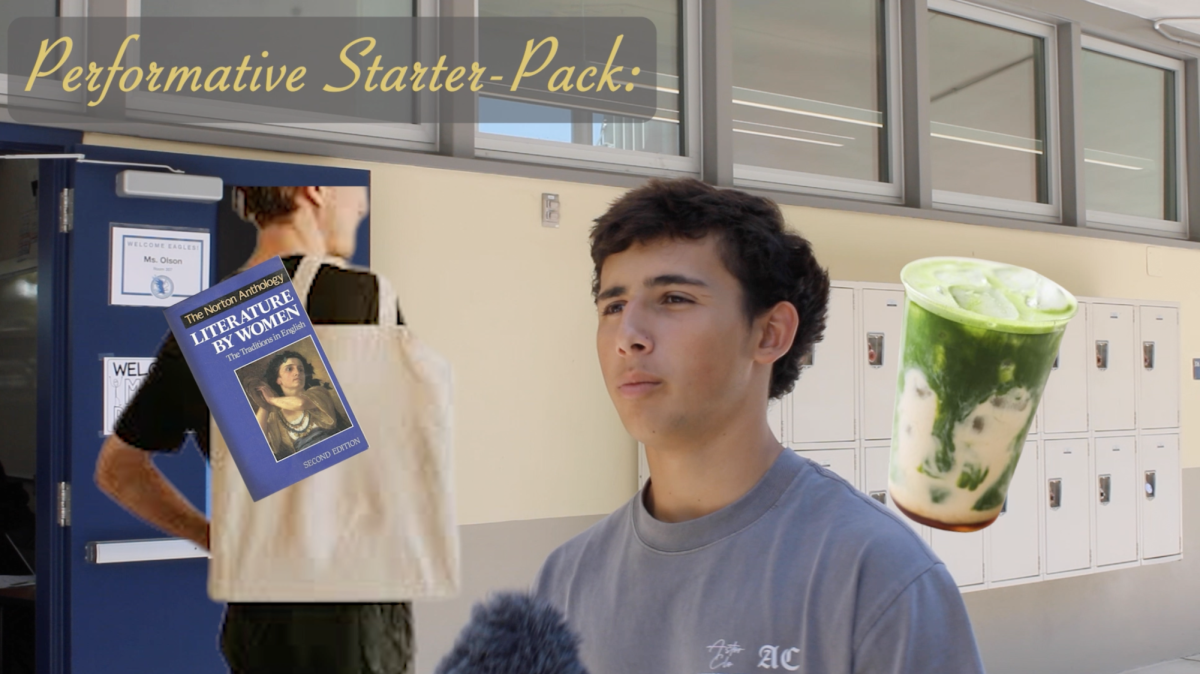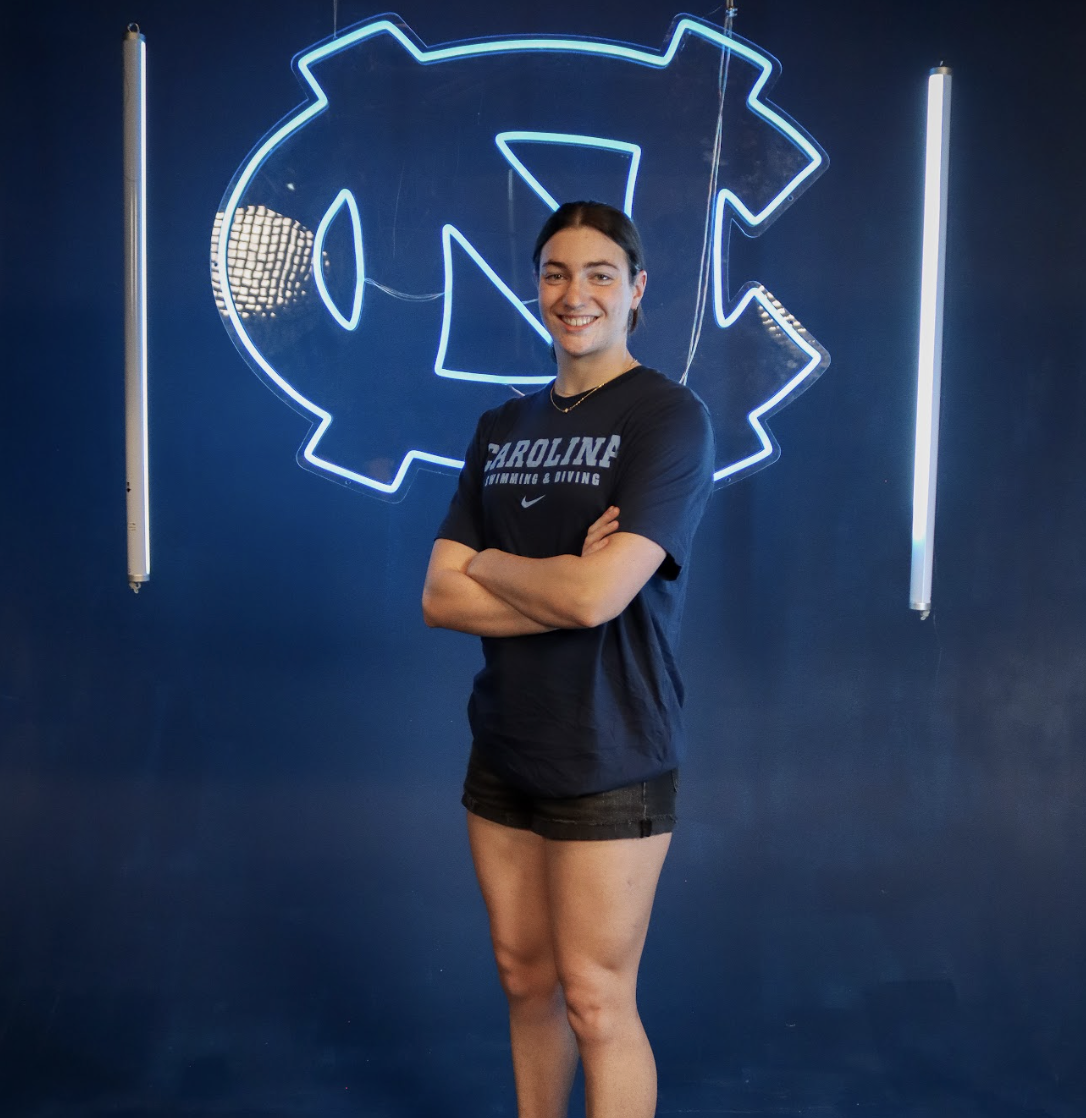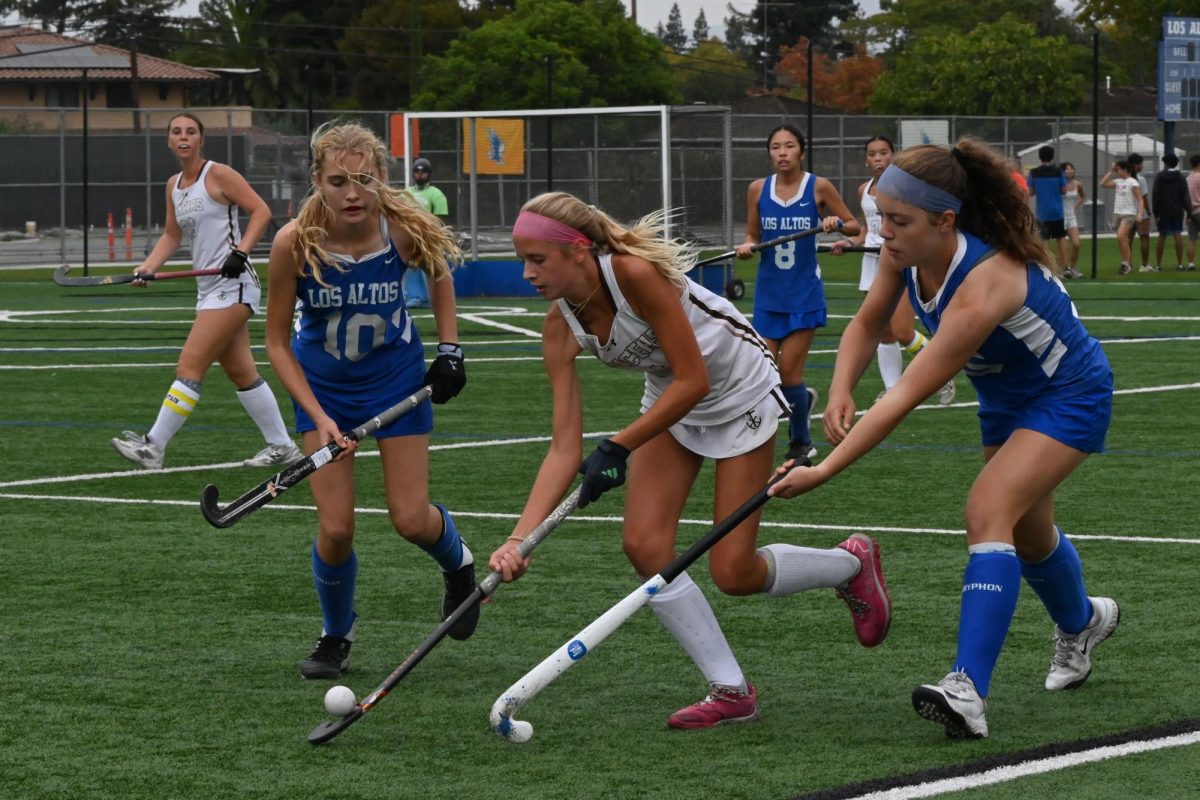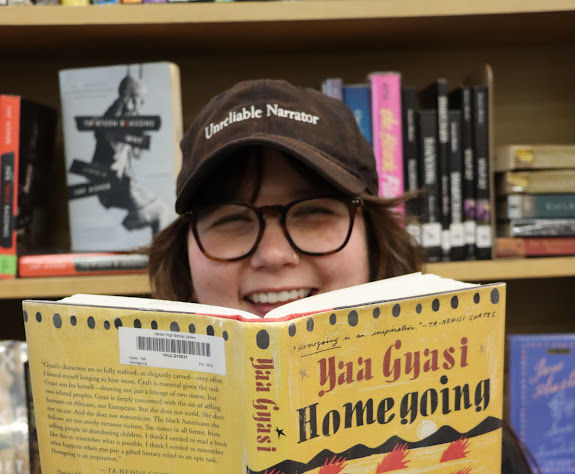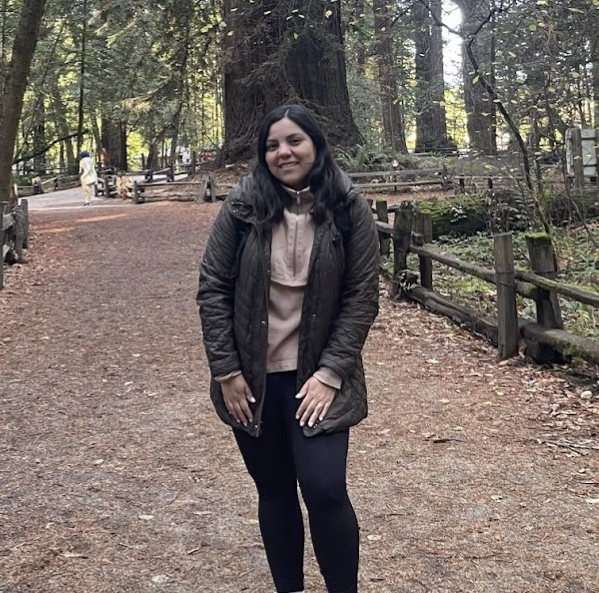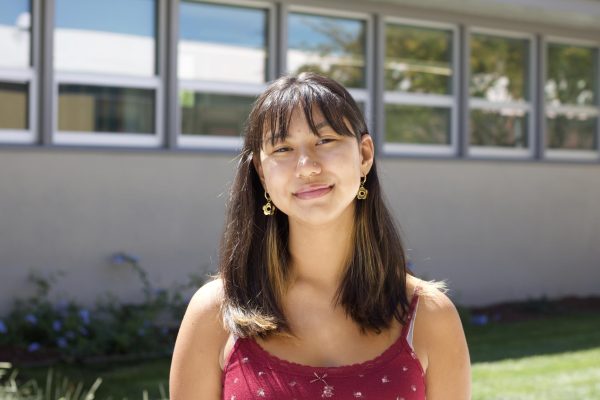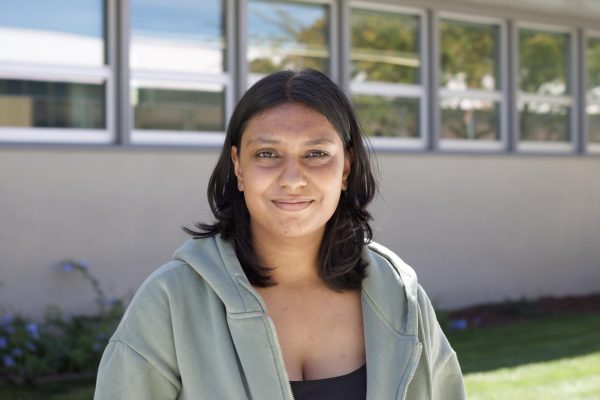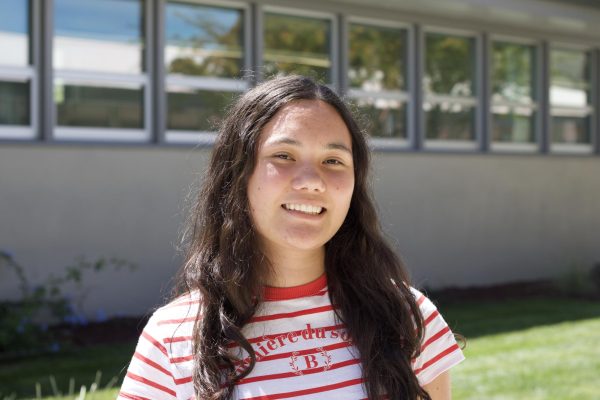On Monday, March 31, students took to the gym floor to show their pride in their identities by demonstrating cultural performances. These ranged from Corrido ballads, to choreographed dances, to a Guzheng solo, and more.
Kalico
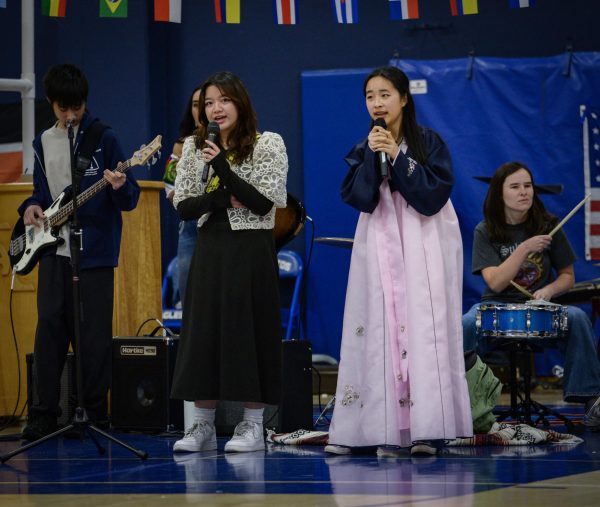
A student band named “Kalico” played at the beginning and end of the diversity rally. Senior Simona Choi and junior Jaz Santos served as the lead singers, while juniors Phineas Lunt and Tom Freda-Eskenazi played guitar — with Tom singing some vocals. Junior Joshua Chai played the bass, while sophomore Annabelle Bock handled the drums. Kalico played “Pasilyo” by SunKissed Lola alongside “Talk” by Beabadoobe and then ended their performance playing “Duvet” by Bôa.
“Serenades are a really big part of Filipino culture, and playing Pasilyo helped me show that Filipinos are very romantic people,” Kalico singer junior Jaz Santos said. “Filipinos are prideful people, and I felt this is who I am as I was singing the Pasilyo.”
Abby Zhou
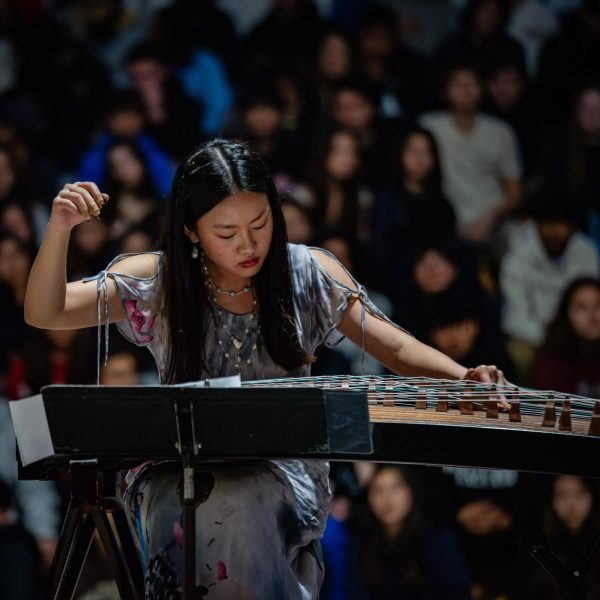
Senior Abby Zhou performed “渔舟唱晚” (Yu Zhou Chang Wan) on the guzheng, plucking the strings in a wistful melody known as “The Fisherman’s Song at Dusk.”
“Yu Zhou Chang Wan” is a famous piece by Lou Shu Hua, composed in the 1930s.
“It portrays the image of fishing boats at sunset while the fishermen sing,” Abby said. “There are different parts of the song that play out the whole image.”
This was one of the first pieces Abby learnt to play. According to her, it has multiple versions, each with its own challenges. It originates from Guangdong music, which is famous for its skill, according to Abby.
Following the pandemic, Abby hasn’t had many chances to perform for an audience. But through the diversity rally, she gained both an audience for her skills, and her showcase of Chinese culture.
“You’re able to really showcase the musical aspect of a culture that people have never heard,” Abby said. “It’s really cool to share a part of a culture that so many people on the other side of the world have heard, but many here haven’t.”
Eleven years playing the guzheng honed both Abby’s confidence and technical skills.
“When I first began performing, I had intense stage fright — whenever I got on stage and saw people staring at me, I would fully blank out and forget whatever I was playing,” Abby said. “I’ve been able to get a hold of my confidence in my own playing and musical abilities.”
Her technical skills were on display at the rally, creating the complex melody of “Yu Zhou Chang Wan.”
“There are different ways to pluck using different sides of the picks, and there’s a lot of ways you can manipulate the strings,” Abby said. “There’s a lot of techniques that go into it and that’s what I find really cool about the instrument.”
Isabella Tom, Noel Nam, Eden Chung, Ellie Choi and Kianna Wong

Freshman Isabella Tom, sophomores Noel Nam and Eden Chung, and juniors Ellie Choi and Kianna Wong danced to “Attention” by NewJeans, a Kpop group. With the upbeat music and their fast paced, synchronized movements, the group captured the attention of the audience.
A few months ago, Isabella and Noel thought of performing at the diversity rally, and reached out to others who were also interested in performing.
Isabella first recorded the choreography and sent it out to the other dancers, who practiced it individually. The group then came together and figured out the final choreography, which was directly inspired by the original NewJeans dance.
“We changed some of the moves — mostly little things,” Isabella said. “But other than that, it’s pretty much the same.”
According to Isabella, the group chose to perform “Attention” not only because it fit the K-pop genre they all loved, but also because it’s well known.
On the day of the rally, the group initially found it daunting to perform in front of so many people.
“I remember we were all wondering ‘Should we go in this side to run in? Should we go on that side?’” Isabella said. “But honestly, after doing it the first time, seeing my friends clapping for me, and getting all the texts afterwards, I felt really great about it.”
Choir
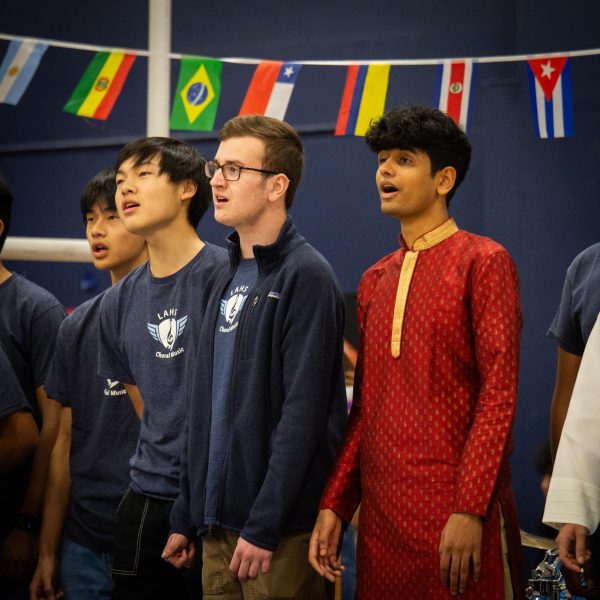
“In Meeting We Are Blessed” is a song of unity, performed by Choir in the rally. Conducted by choir teacher Lauren Diez, the students sang in unison, their voices a crescendo of volume.
It was originally created for the meeting between the Nairobi Chamber Chorus, a professional group out of Kenya and the Festival Singers of Florida from the U.S. Composed by Troy Robertson and written by R. Gatsnahos and John Donne, it was first commissioned for conductor Ken Wakia when the Nairobi Chamber Chorus visited the southeast U.S.
“It’s about acknowledging the differences we all have but still deciding to put them aside to make good music together,” choir teacher Dario Johnson said. “It is about being in friendship and harmony, not dissonance.”
Selected by Diez, it was performed by all four choir classes.
“Choir is really about community,” Johnson said. “The choir is not good if the singers are not unified, if they are not thinking about community. We’re doing the consonants, we’re doing the vowels, we’re doing the expressions at the same time.”
Chamber Ensemble and Orchestra
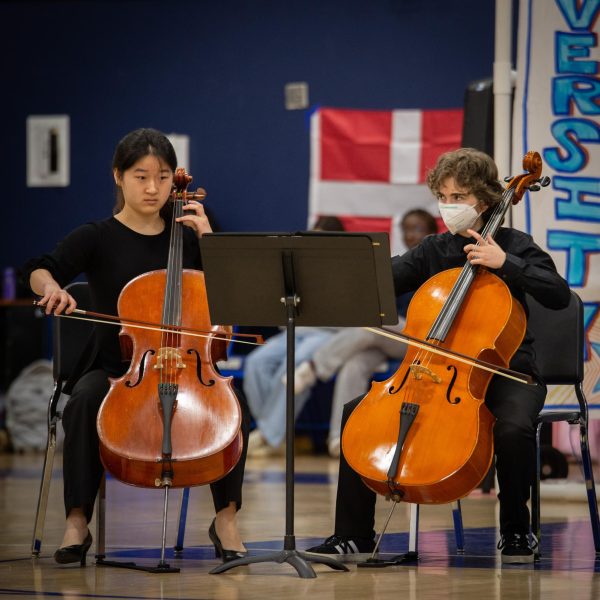
The Chamber Ensemble and Orchestra performed the song “Lion City” by Soon Hee Newbold, a Singaporean piece that mixes different cultural tunes from Asian countries. The mellow sounds of the violins and the loud vibrato of the cellos combined to play the piece.
“We wanted to choose a piece that represented the most of us,” senior Ayumi Terlizzi said. “When you think of classical music, it’s usually made by old white men, but this song stuck with us because it’s made by a Korean American artist who makes her music more modern, which sways from the original classical music.”
Ishika Anand

Freshman poetry slam winner Ishika Anand stood on a platform in the middle of the gym underneath a spotlight, reciting her poem “Just Roll.” The poem was familiar to those who attended the freshman poetry slam, but new to everyone else.
Her poem highlighted the ups and downs in her life, such as making new friends who later ignored her in the hallway. But throughout these experiences, her father was the one who taught her how to recover and keep going.
“The poem is about a saying that my dad has, which is to just roll with the punches,” Ishika said.
Indian Student Association
The Indian Student Association (ISA) danced to “Dilliwaali Girlfriend”, “Desi Girls”, “Desi Boyz”, and “Tu Meri.” The upbeat songs, colorful clothing, and energetic dances brought a joyful and fun atmosphere to the rally.
ISA presidents seniors Ayana Modi and Ziana Merchant chose the songs.
“We’ve heard a lot of these songs at weddings,” Ayana said. “A lot of our choreography inspiration comes from just searching up Indian wedding dances on Youtube.”
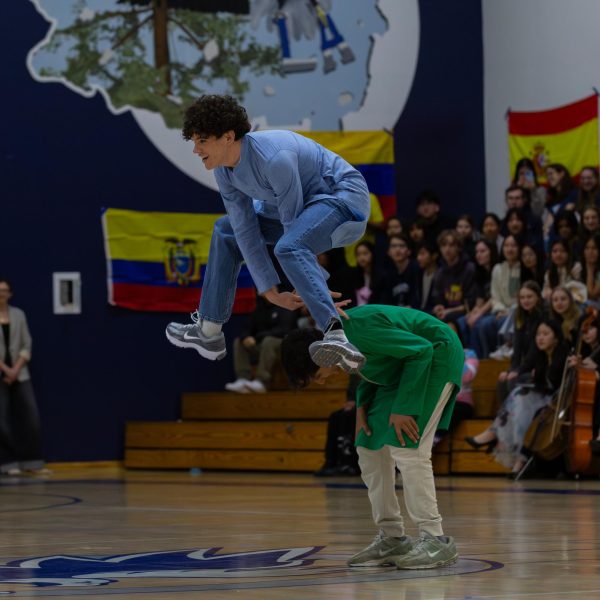
Because of their months of preparation and countless lunch dance rehearsals, many members felt a sense of accomplishment and excitement on the stage.
“I mostly felt excited because we’ve been preparing for so long, so it was exciting to finally be performing like what we had worked so hard on,” ISA treasurer junior Aarushi Shukla said. “Rehearsing was a really fun process, and I just really enjoyed the performance aspect.”
ISA has performed at the rally for years.
“I think it’s really important to have this kind of diversity at school,” Ayana said. “I think dance and music is something that everyone enjoys and everyone can relate to, so I think this is a great way to kind of introduce people to Indian culture.”
“When you see your culture on display and being appreciated, it can be validating and make you feel proud of your own culture,” Aarushi said. “Experiencing other people’s cultures also gives you a better view of the world, and greater understanding of people who are different from you. I think culture is meant to be shared, and there’s a lot of things that we can learn from each other’s cultures.”
Grupo Inicial

Grupo Inicial is a corrido band composed of freshman Jesus Guerrero Moreno, sophomore Nathan Cabebe and senior Jose Salazar. They performed “Noches de Junio” by Nueva Firma — both the vocals and guitar.
“Music is our culture,” Nathan said. “Music is a huge part of our festivities and holidays, and who we are.”
“Music brings us together,” Jose said. “It’s really our culture and we want to share that with people.”
For the group, performing at the diversity rally was the next step in their progression.
“It all started from family to friends, and from friends, it just headed towards the school,” Jose said. “It’s technically been starting since I was a little kid when I was exposed to all this music, and it just kept spreading and spreading until now where we performed in front of hundreds of people.”
The event, through nerve racking, was extremely rewarding.
“I’ve always been shy to sing out there, and I was scared that I was going to mess up,” Jose said. “At first I was doubting myself a little, but then I was like, ‘we’re gonna play like we’ve never played before,’ and we came out super motivated.”
“It feels amazing to be part of the culture,” Jose said. “I’m glad that I’m able to represent my culture because it’s fun, it’s loving, it’s caring, and people that I love are from there.”
LSU

The Latino Student Union (LSU) danced to a mashup of “Pelea De Gallos” (folkclorico), “Propuesta Indecente” (Bachata), “Oye” (Cumbia), and “La Cumbia Tribalera” (Tribalera) for their performance. Their vibrant, colorful skirts spun and twirled as they danced across the gym floor.
“These songs are meant to show different aspects of dance from all around Latin America,” LSU President senior Sophia Diaz Lopez said. “It’s important to not only the LSU dance choreographers, but LSU as a whole to represent these parts of our culture. The songs range from Mexican culture to Dominican culture, so it’s showcasing every bit of Latin American music.”
The variety in origins of the songs played was chosen to challenge generalizations of Hispanic cultures.
“I’ve been working towards representing other cultures since freshman year, and a lot of people stereotype Latino Student Union as the ‘Mexican Student Union, ’ and that’s something I don’t stand for,” Dance Coordinator senior Camila Fonseca Estevez said. “I want other cultures from different countries to also be represented, so that’s why we take a bit from every country and try to incorporate their dance into our routine.”
Runway
Korean Culture Club
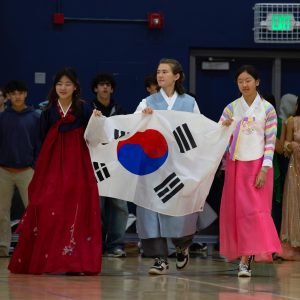
The Korean Culture Club walked in the diversity runway with members seniors Isa Baratoff and Simona Choi, junior Ellie Choi, and freshmen Charlotte Kim and Jungsoo Hahn to display their cultural attire.
Made up of jeogoris (jackets) and chimas (skirts), four members wore traditional women’s hanboks, a traditional style clothing worn by Korean women. One member wore a traditional men’s hanbok, with a longer jeogori and baji (pants).
“I think it’s important for students to feel that they’re represented on campus and the diversity rally felt like a nice way to display that representation,” Simona said. “And it was also fun to show our pride in our culture.”
LSU quince walk
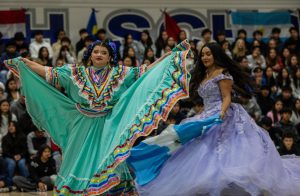
(Milan Grbovic)
LSU members Sophia Diaz Lopez, Yocelin Rojas, and Adamariz Perez Iturbide walked down the diversity runway wearing quince dresses. However, Lucia Trujio wore a traditional folklorio dress. A quince, aka “quinceanera” is a celebration, similar to sweet 16, where Hispanic families celebrate a daughter’s 15th birthday. These parties are hosted as a way to celebrate a daughter’s transition to womanhood.
“I relived my quince moment again.” LSU Dance Coordinator senior Yocelin Rojas said, “I’m 18 now, but I felt the flashbacks coming back of my quince, and I felt very happy; it was a very exciting moment to walk down the runway.”
Gender Sexuality Awareness Club
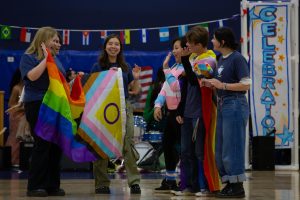
Gender Sexually Awareness members sophomores Mazie Reidy and Samuel Hiltgen, junior Ella Omura, and seniors Mei Ozawa, Caesar Coca, and Ace Fenner participated in the diversity runway, carrying flags representative of different LGBTQIA identities. For instance, junior Ella Omura dressed in a sweatshirt with the transgender flag on it to show her pride in her identity.
“I think it was important to do this in front of the school because I know that there’s a lot of subtle queerphobia, definitely as the word ‘gay’ has come back as a derogatory term,” Ella said. “We are trying to break that stigma and dismantle the queerphobia around school.
Filipino student union
Filipino student union officers took to the diversity runway. They wore Barong tagalogs, which are traditional Filipino garments used for formal occasions. These garments are traditionally made of piña fibers, which are made from pineapple trees. However, modern Barongs are made of silk, cotton, or organza.
“It’s really empowering to represent Filipino culture and share it with the larger student body, as well as have a flag to wave around the gym.” Filipino Student Union senior Karla Araracap said.
Indian Student Union
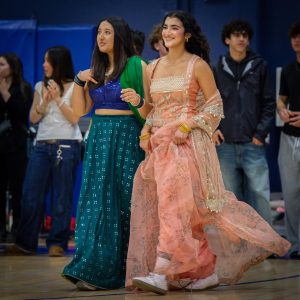
Indian Student Association members sophomores Nisma Khan, Manya Sikka, Asha Rammohan, and Amira Shah wore traditional Indian clothes with lehengas (skirts), cholis (blouses), and dupattas (shawls), along with jewelry.
“We wanted to have a chance to show off how beautiful the outfits can be,” Manya said. “Indian clothes are super extravagant, and a large part of Indian culture revolves around expensive jewelry and colorful designs.”



